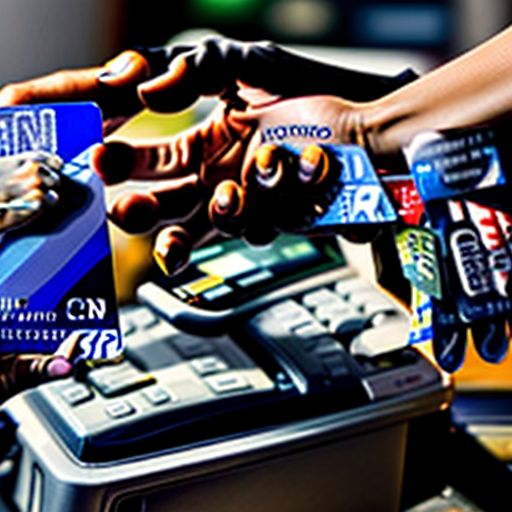Let’s face it, credit card debt can feel like a heavy weight on your shoulders. It can cause stress, anxiety, and limit your financial freedom. But the good news is, you’re not alone, and there’s a way out! This comprehensive guide will explore the best ways to get rid of credit card debt and get you back on track to achieving your financial goals.
Understanding the Burden of Credit Card Debt
Before we dive into solutions, it’s essential to understand the true cost of credit card debt. When you carry a balance on your credit card, you’re charged interest on the unpaid amount. These interest charges can quickly add up, making it even harder to pay off your balance.
The High Cost of Interest
Credit card interest rates can be notoriously high, often ranging from 15% to 25% or even more. This means that for every $1,000 you carry as a balance, you could be paying $150 to $250 or more in interest annually!
The Debt Cycle Trap
Credit card debt can easily lead to a vicious cycle. Minimum payments, while seemingly helpful, often only cover a small portion of the principal balance and a large chunk of interest. This means you end up paying more in the long run and stay in debt longer.
Effective Strategies to Eliminate Credit Card Debt
Now, let’s explore some proven strategies to help you break free from the clutches of credit card debt:
1. The Debt Snowball Method
This popular method focuses on building momentum by tackling your smallest debt first. List your credit card debts from smallest to largest balance, regardless of interest rates. Make minimum payments on all cards except the smallest one. Put as much extra money as you can towards the smallest debt until it’s paid off. Once it’s gone, take the money you were paying on that debt and apply it to the next smallest, and so on.
Why it works: The debt snowball method provides a psychological boost by giving you quick wins early on. Seeing debts disappear, even small ones, can motivate you to stay on track.
2. The Debt Avalanche Method
This method prioritizes paying off debts with the highest interest rates first. List your credit card debts from highest to lowest interest rate. Make minimum payments on all cards except the one with the highest interest. Focus all extra payments on the card with the highest interest until it’s paid off. Then, move on to the next highest interest rate card, and so on.
Why it works: The debt avalanche method saves you the most money in interest payments over time, making it a more mathematically sound approach.
3. Balance Transfer Credit Cards
Consider transferring your balance to a credit card with a 0% introductory APR period. This can give you a break from high interest charges, allowing you to make a significant dent in your principal balance.
Things to consider: Be aware of balance transfer fees, typically ranging from 3% to 5% of the transferred amount. Ensure you can pay off the balance before the introductory period ends, as interest rates usually revert to a higher rate afterward.
4. Debt Consolidation Loans
A debt consolidation loan allows you to combine multiple credit card debts into a single loan with a fixed interest rate. This can simplify your payments and potentially lower your overall interest rate.
Things to consider: Shop around for the best interest rates and loan terms. Be mindful of any fees associated with the loan. Ensure you have a solid plan to avoid accumulating new debt once you consolidate.
debt.yeuphancung.com/wp-content/uploads/2024/07/debt-relief-6694fc.jpg" alt="Debt Relief" width="512" height="512">Debt Relief
5. Budgeting and Spending Habits
Creating a realistic budget and tracking your spending is crucial in any debt payoff journey. Identify areas where you can cut back on expenses and redirect those funds toward your debt.
6. Increase Your Income
Explore opportunities to increase your income, such as taking on a side hustle, selling unwanted items, or negotiating a raise.
Seeking Professional Help
If you’re struggling to manage your debt on your own, don’t hesitate to seek professional help. A credit counselor can provide guidance on budgeting, debt management plans, and negotiating with creditors.
Conclusion
Escaping the clutches of credit card debt is achievable with the right strategy and commitment. By understanding the different methods, creating a realistic budget, and exploring additional resources, you can pave your way toward financial freedom. Remember, the first step is often the hardest, but with perseverance and the right tools, you can achieve your debt-free goals. If you’d like to explore more resources or have any questions, feel free to leave a comment below or browse our website for additional information.
